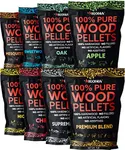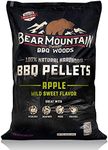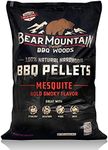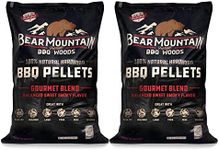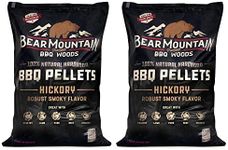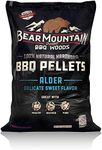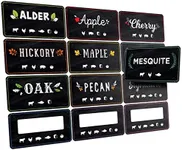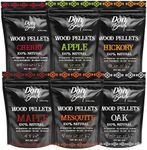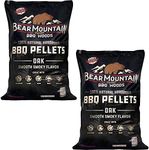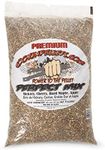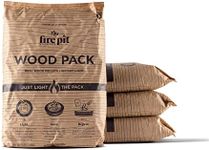Buying Guide for the Best Wood Pellets
Choosing the right wood pellets for your heating needs can make a significant difference in terms of efficiency, cost, and environmental impact. Wood pellets are a popular choice for heating because they are a renewable energy source and can be more cost-effective than traditional fossil fuels. When selecting wood pellets, it's important to consider several key specifications to ensure you get the best performance and value for your specific situation.Ash ContentAsh content refers to the amount of ash produced when the wood pellets are burned. This is important because lower ash content means less frequent cleaning of your stove or boiler, and it also indicates higher quality pellets. Ash content is usually expressed as a percentage. Pellets with ash content below 1% are considered premium and are ideal for residential heating. Pellets with ash content between 1% and 2% are standard and suitable for most users. If you have a high-efficiency stove or boiler, you might want to opt for pellets with the lowest possible ash content to minimize maintenance.
Moisture ContentMoisture content is the amount of water present in the wood pellets. This is crucial because high moisture content can reduce the efficiency of the pellets and cause them to produce more smoke and creosote. Moisture content is typically measured as a percentage. Premium wood pellets usually have a moisture content of less than 8%, which ensures efficient burning and less residue. Standard pellets may have moisture content up to 10%. For optimal performance, especially in colder climates, choose pellets with the lowest moisture content available.
Heat OutputHeat output, measured in British Thermal Units (BTUs), indicates how much heat the pellets will produce. This is important for determining how effectively the pellets will heat your space. Higher BTU ratings mean more heat output. Premium pellets typically offer heat output of 8,000 to 8,500 BTUs per pound, while standard pellets may range from 7,500 to 8,000 BTUs per pound. If you live in a colder area or have a larger space to heat, you should look for pellets with higher BTU ratings to ensure adequate warmth.
Pellet Size and UniformityPellet size and uniformity refer to the dimensions and consistency of the pellets. This is important because uniform pellets ensure smoother feeding into the stove or boiler, reducing the risk of jams and ensuring consistent burning. Most wood pellets are about 1/4 inch in diameter and vary in length from 1/2 inch to 1 inch. Consistent size and shape are particularly important if you have an automatic feeder. For the best performance, choose pellets that are uniform in size and shape to ensure reliable operation of your heating system.
Source MaterialSource material refers to the type of wood used to make the pellets. This is important because different types of wood have different burning characteristics. Hardwood pellets, made from trees like oak and maple, tend to burn hotter and longer, making them ideal for heating. Softwood pellets, made from trees like pine and spruce, can burn hotter but may produce more ash. Some pellets are made from a blend of hardwood and softwood. If you prefer longer burn times and less frequent refueling, hardwood pellets are a good choice. If you prioritize higher heat output, softwood pellets might be more suitable.



